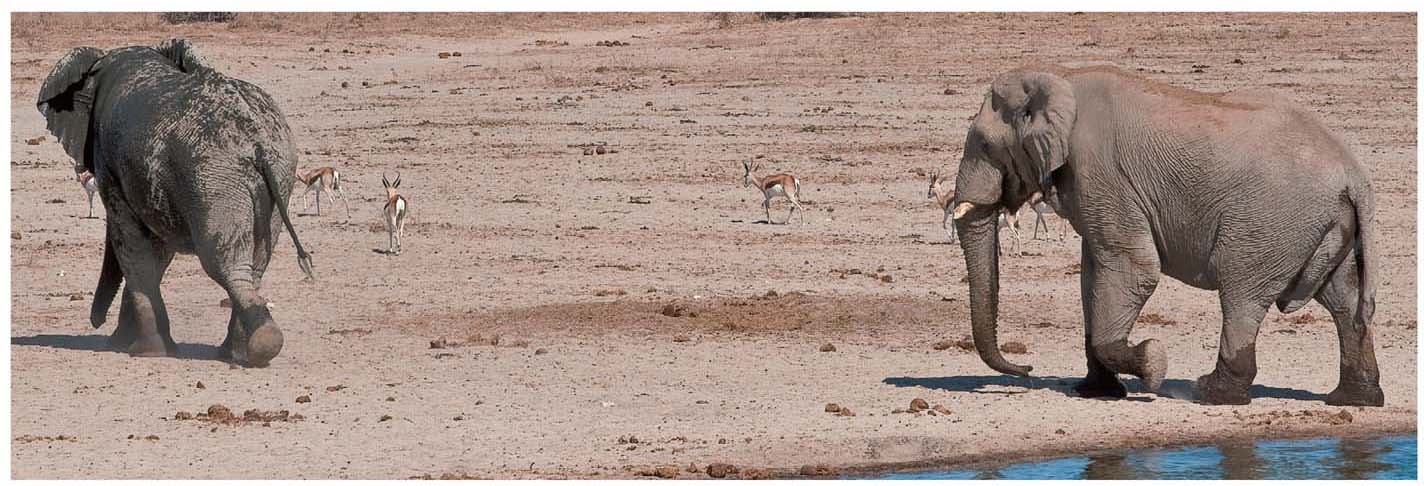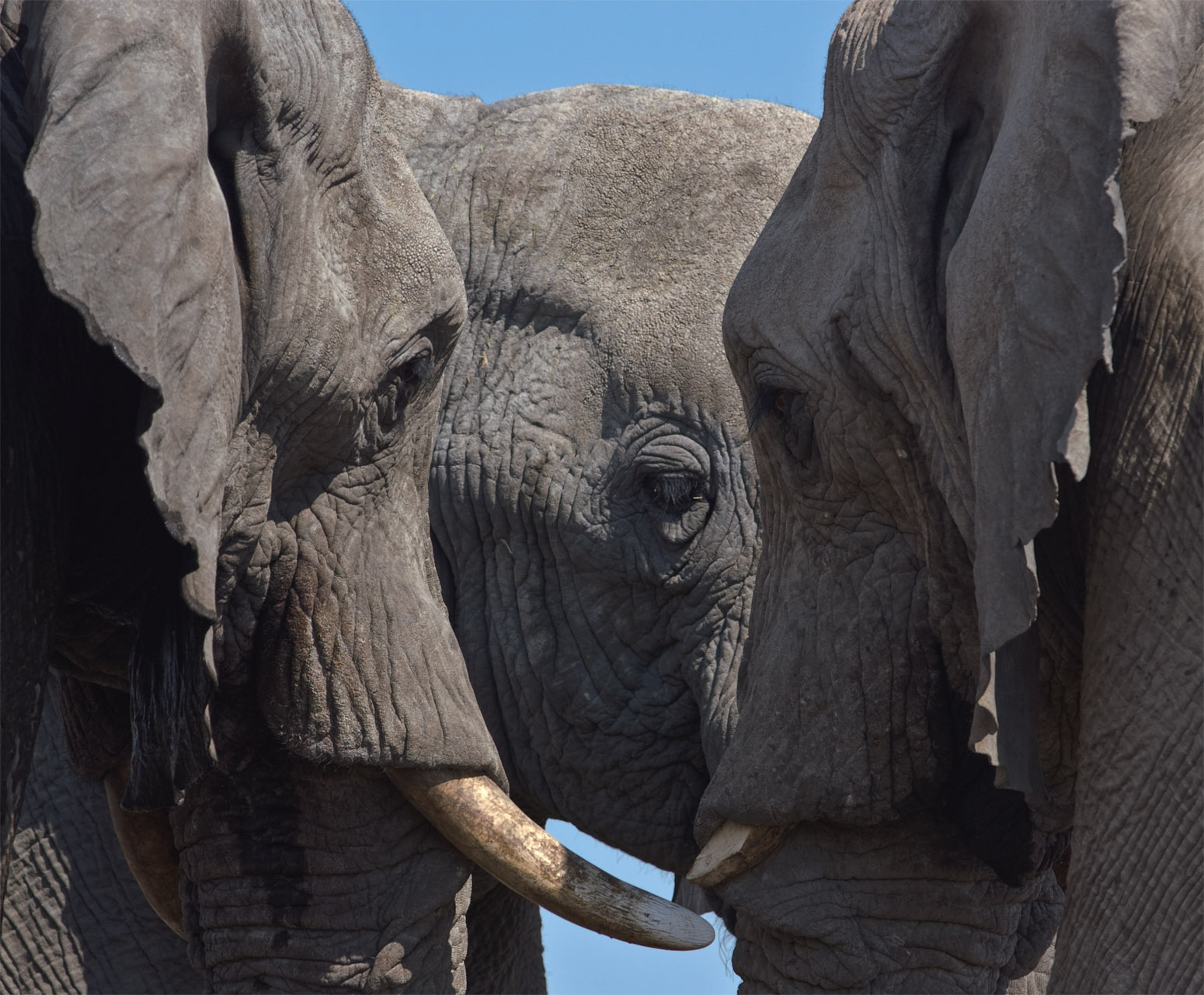

In the arid environment of Etosha National Park, there are regions where groups of bulls appear to be larger and more tightly bonded than bull groups studied in less arid environments, particularly in dry years. Bull groups in our dry study area have strictly defined hierarchies in drier years. A strict hierarchy may help to reduce conflicts over limited resources when water and vegetation are scarce, and may determine who gets access to the best drinking water.
The dominant bull of one of the bonded groups (aka “the boys’ club”) that we have been following over the last several years is named Greg (aka “the don”).
I have been studying Greg since 2004. His character has been remarkably instructive of what it takes to be on top of the hierarchy and stay there through the best and worst of times, balancing aggression with the equivalent of back-slapping and morale-building among his constituency. The dry years are much easier than the wet years, as pecking orders are much more important to maintain when resources such as drinking water are low. Greg’s position is more tenuous in wet years, as the younger bulls explore larger territories and tend to take more chances with their elders, and more musth bulls frequent the area in search of females in estrus.
For years now, whenever Greg strides up to the waterhole, the other bulls in the boys’ club slowly back away, allowing him access to the best water. And when Greg settles in to drink, each bull in turn approaches him with an outstretched trunk, dipping the tip into Greg’s mouth as though kissing a real don’s ring. After performing the ritual, each bull’s shoulders seem to relax at seeing their don placated, and each moves down to a lower-ranking position, away from Greg’s preferred water, in the elephantine equivalent of a male social club.
This ritual greeting of the don is a recurring event that never fails to impress me—one of those reminders in life that human beings are not as unique in our social complexity as we sometimes like to think. The society of elephants is also profoundly steeped in ritual.
Dominance among bulls appears to be maintained through a delicate balance between friendly and aggressive behavior. While higher-ranking bulls exhibit more aggressive behavior than subordinate bulls, they also extend a surprising number of friendly gestures.
We also discovered that some bulls usually seem to prefer the company of two or more other males—what I term “buddies”—revealing that male elephants are much more social than previously thought, and maybe more social in drier environments.
Sparring as a ritual is also an important aspect of male bonding with older bulls, as illustrated by Willie and Tim’s meditative Tai Chi spar in the sequence of photos on pages 138–39. Such ritual is evident in many all-male human societies as well, from fraternity hazings to boot-camp initiations to religious ceremonies.
Ritualized dominance behaviors within these bonded male groups are thought to formalize status relationships, where acts of subordination toward dominant individuals may serve to preempt aggression and thus generate greater tolerance among group members—hence the ceremonial stoop and kiss of the mafia don’s ring to quell any thought of insubordination, disloyalty, or coalition formation against the don.
Aggression in male elephants is often very subtle, where a slight lifting of the head or a foot toss may disclose less than cordial relations between two individuals. But, every once in a while, aggression is exhibited in extremely violent outbursts, where a tusk wound could result in death.
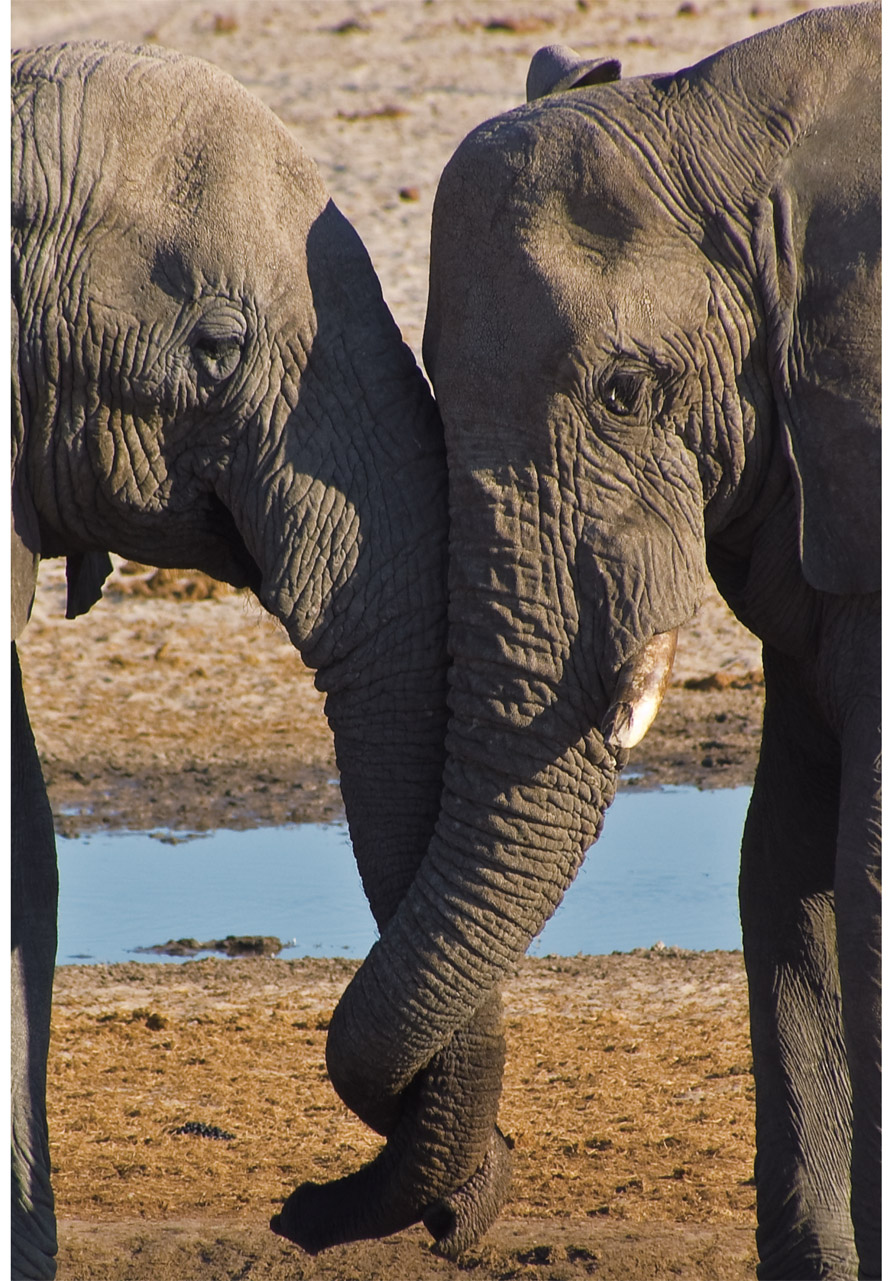
Jack Nicholson and Luke Skywalker engage in an intimate trunk wrap. Such intimate physical engagement requires mutual trust as neither elephant is in the position to attack or defend itself.
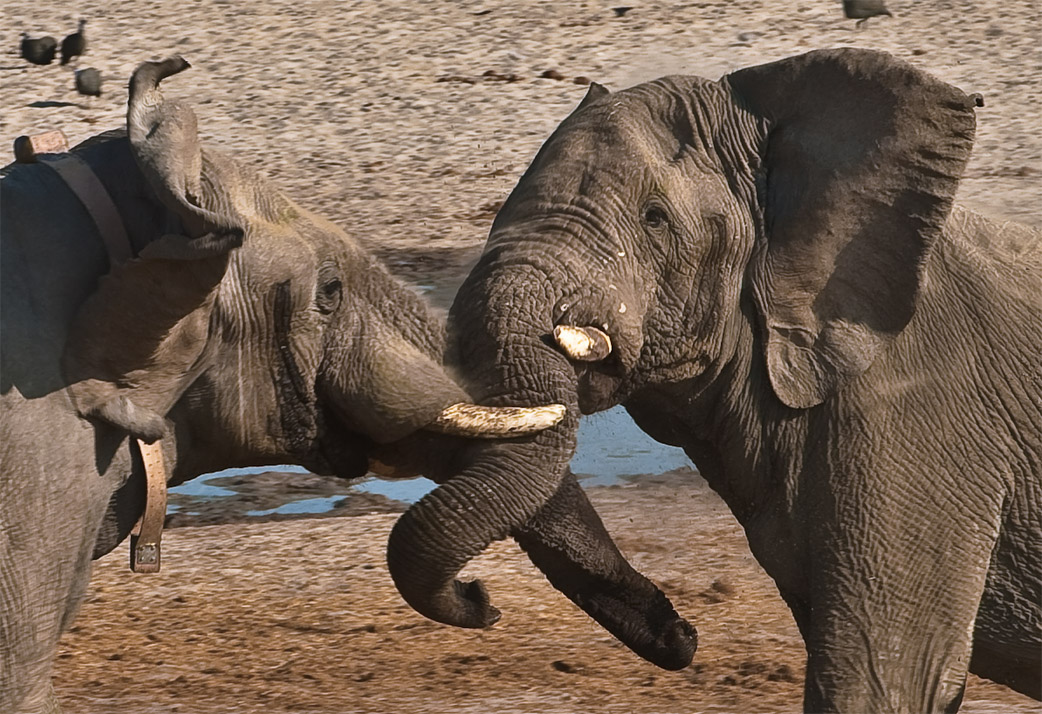
Prince Charles (on the left) and Beckham hurl themselves at each other like two locomotives.
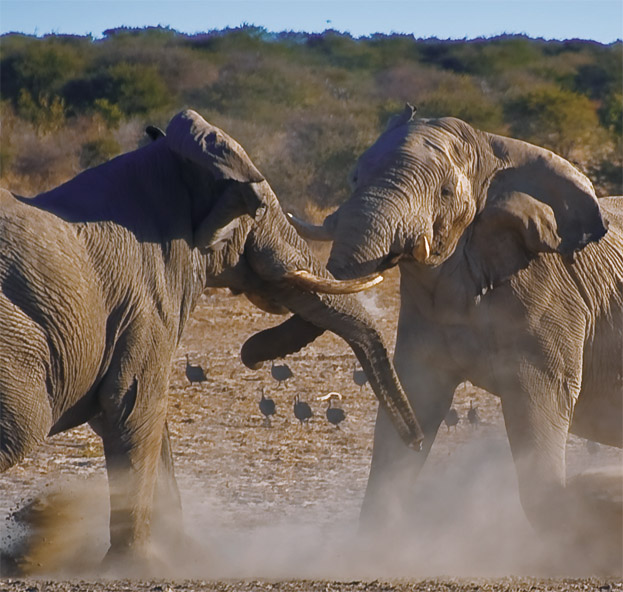
Frankie Fredericks, the don’s henchman (on the left), clobbers the newcomer that seems to have offended Greg in some way.
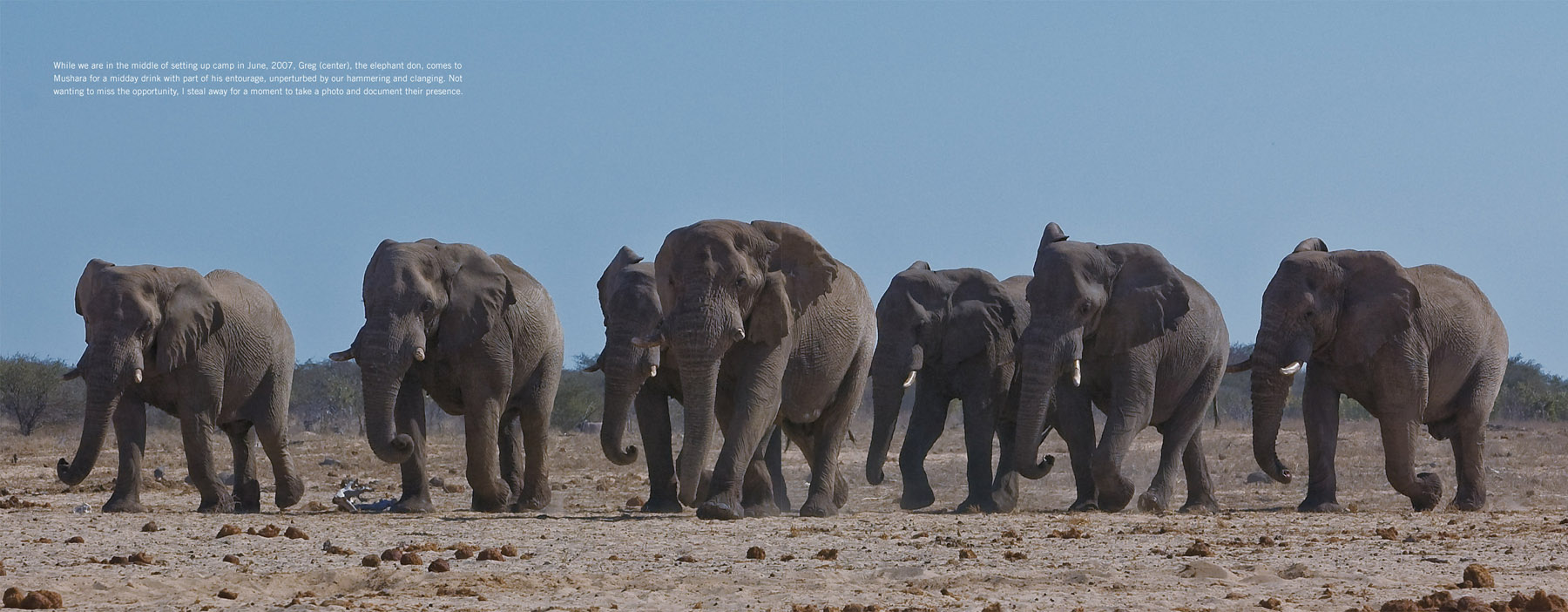
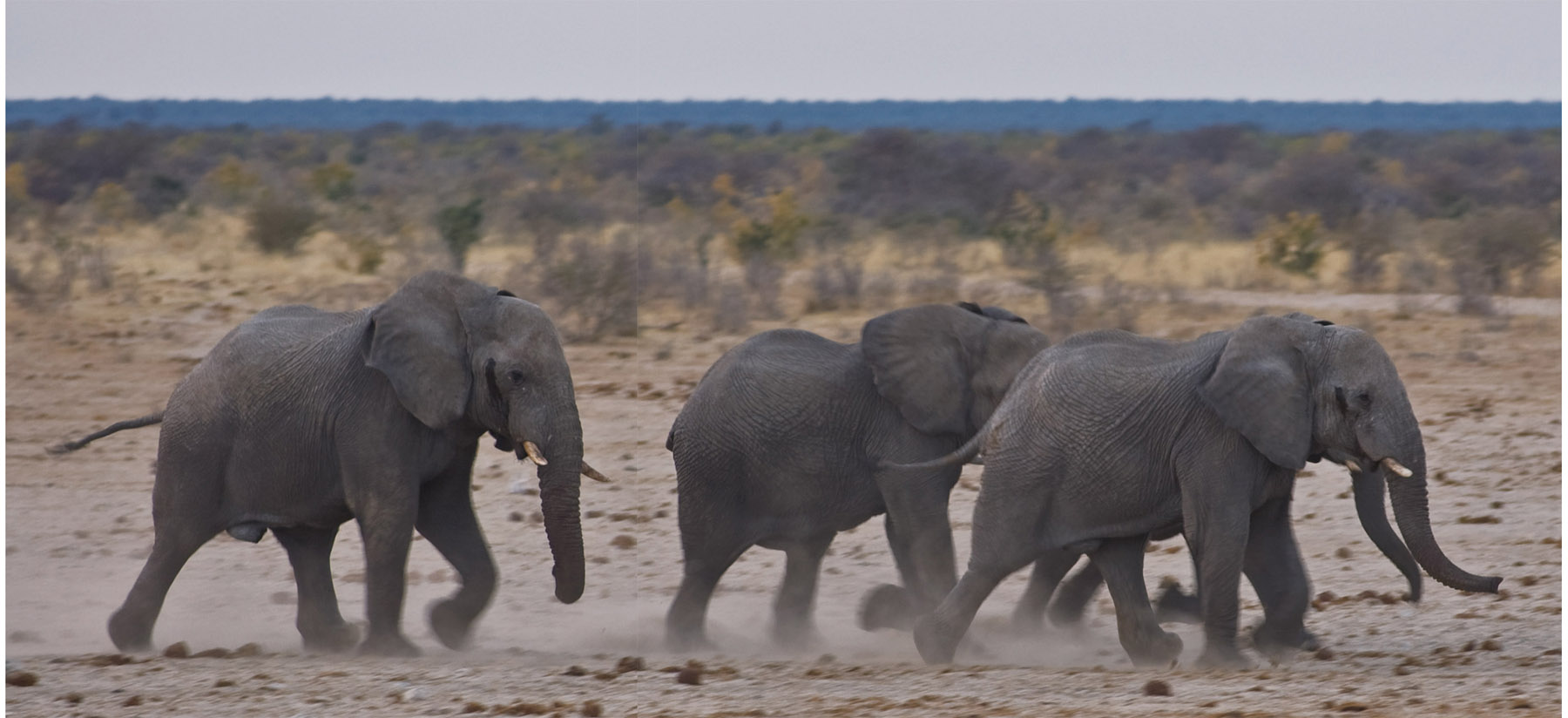
Younger core members of Greg’s boys’ club rush in for a drink. It is unusual to see males of this age so flustered (this is accentuated by the draining temporal glands seen next to the eyes of the bulls on the left and right), but without older males around, these subadult bulls can lose their cool unexpectedly.
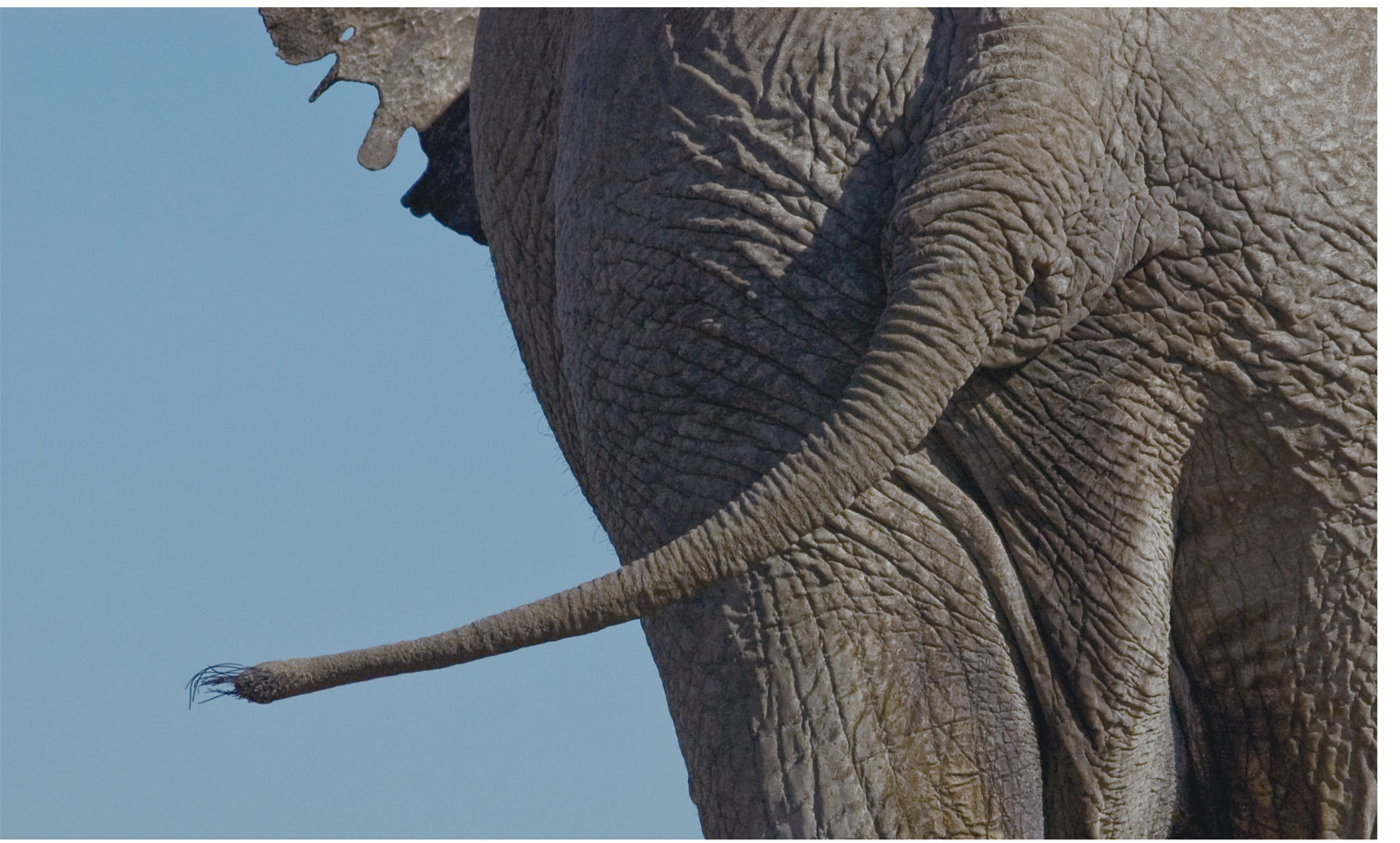
We know this dominant bull (above) is Greg (aka “the don”) because of the two square notches in the lower portion of his left ear, along with his scraggly tail hair. But there is something else about him, something visible from a long way off that reveals his character. This guy has the confidence of a general—the way he holds his head, as well as his casual swagger. He also doesn’t hesitate to show his affection for the younger bulls, as he does in the photo on the facing page. Here, he leans his head against little Hardy Boy’s rear in a moment of what looks like pure affection, judging from Hardy Boy’s lack of fear in remaining in the don’s presence. He is a recent young recruit to the boys’ club and is distinguishable by the keyhole cutout in the middle of his right ear.
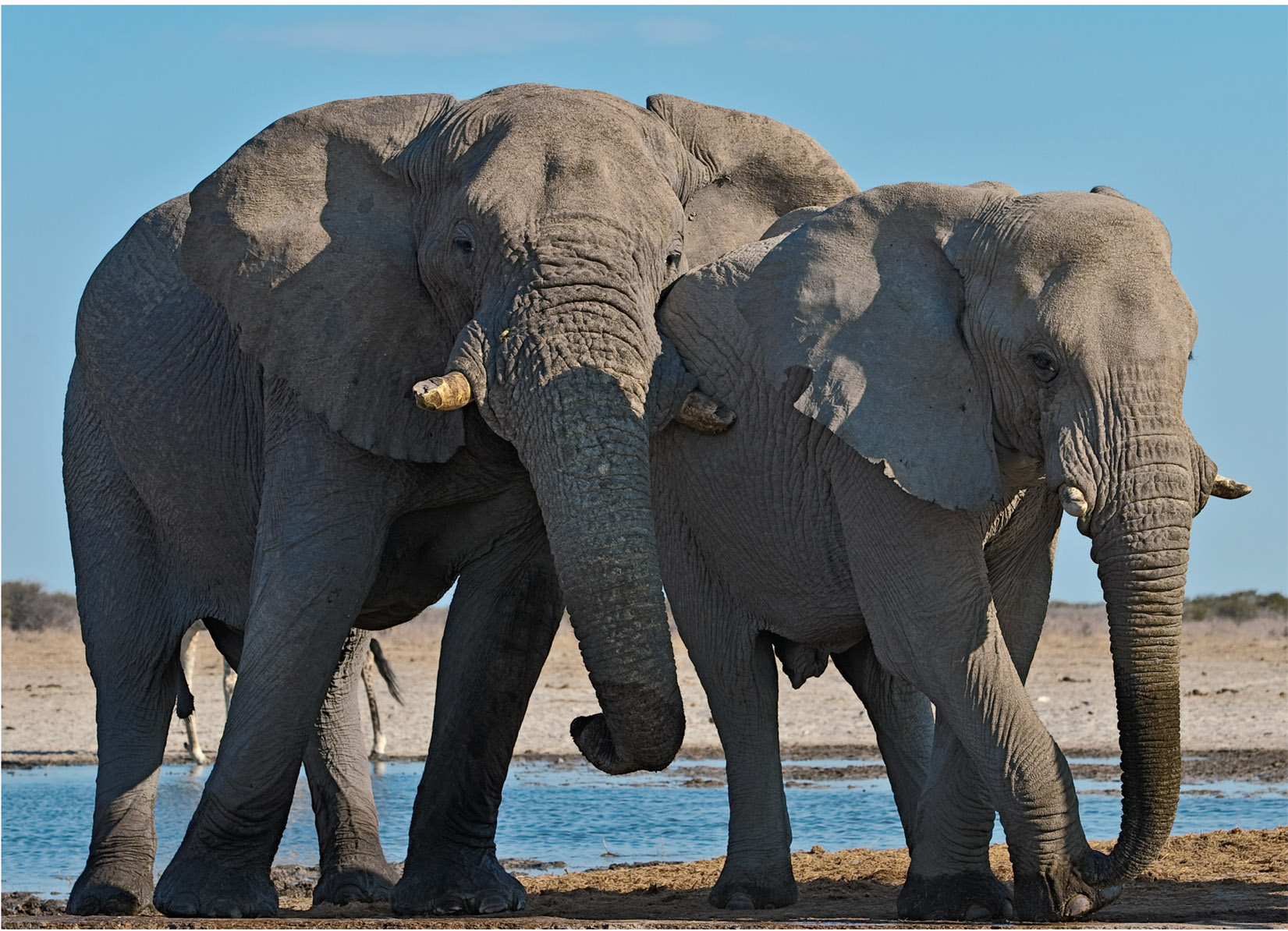
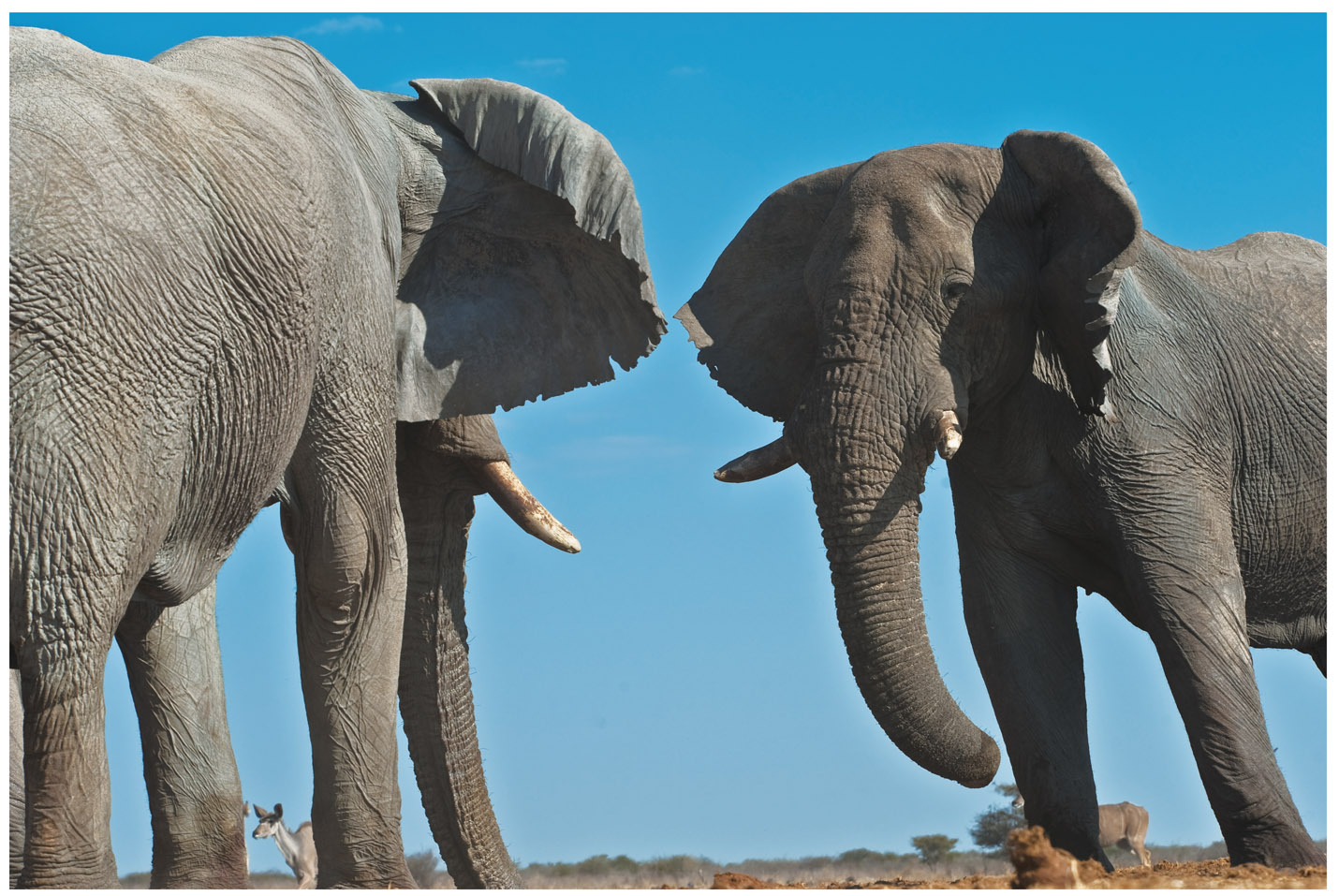
Keeping good relations with the don is important, no matter how old one is. Here, the older Brendan (left) approaches Greg tentatively and breaks the tension (notice how Greg’s ears are forward and pinched in the photo above, indicating agitation) with a trunk-to-mouth greeting (facing page). We assume that Brendan is at least as old or older than Greg, based on his shoulder height and the broadness of his head.
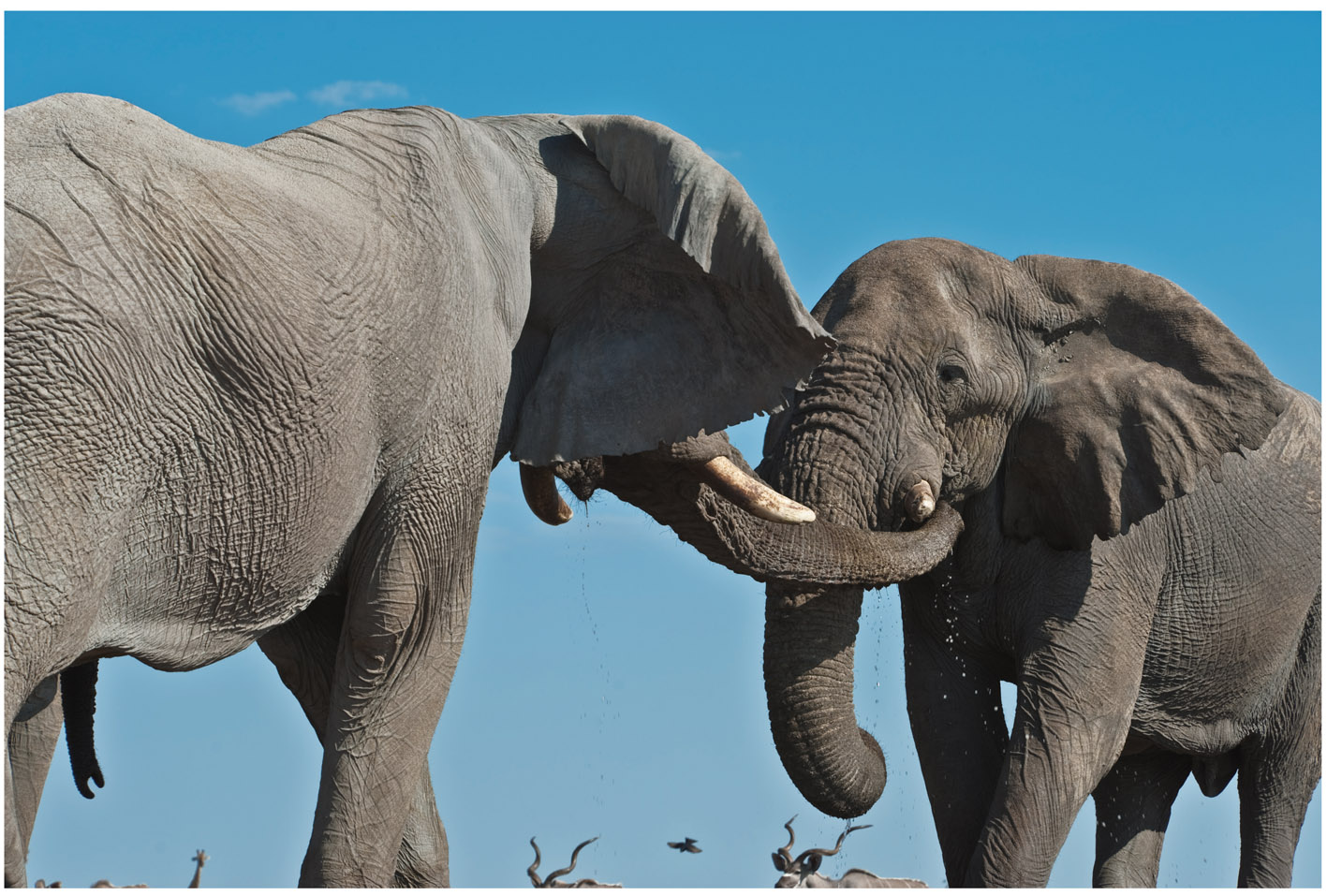
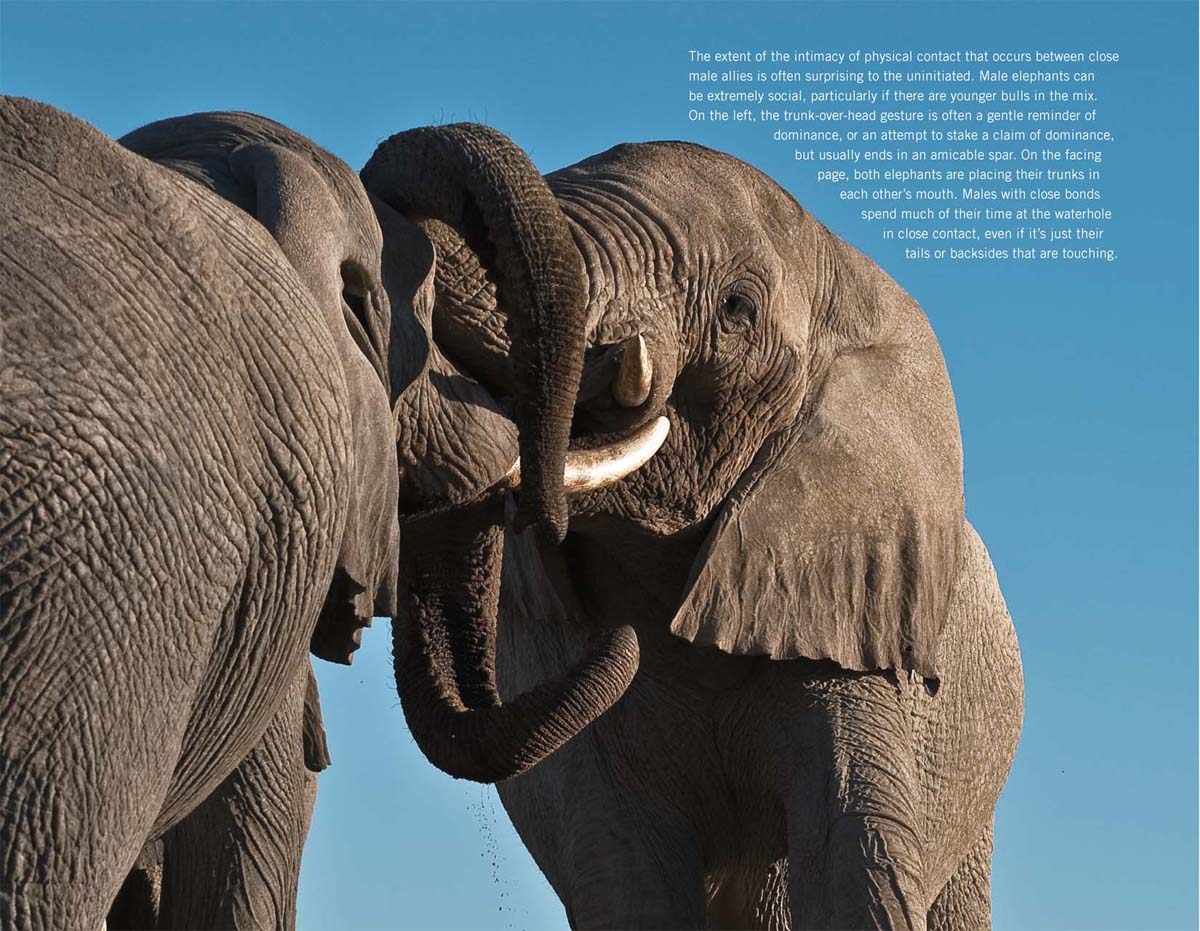
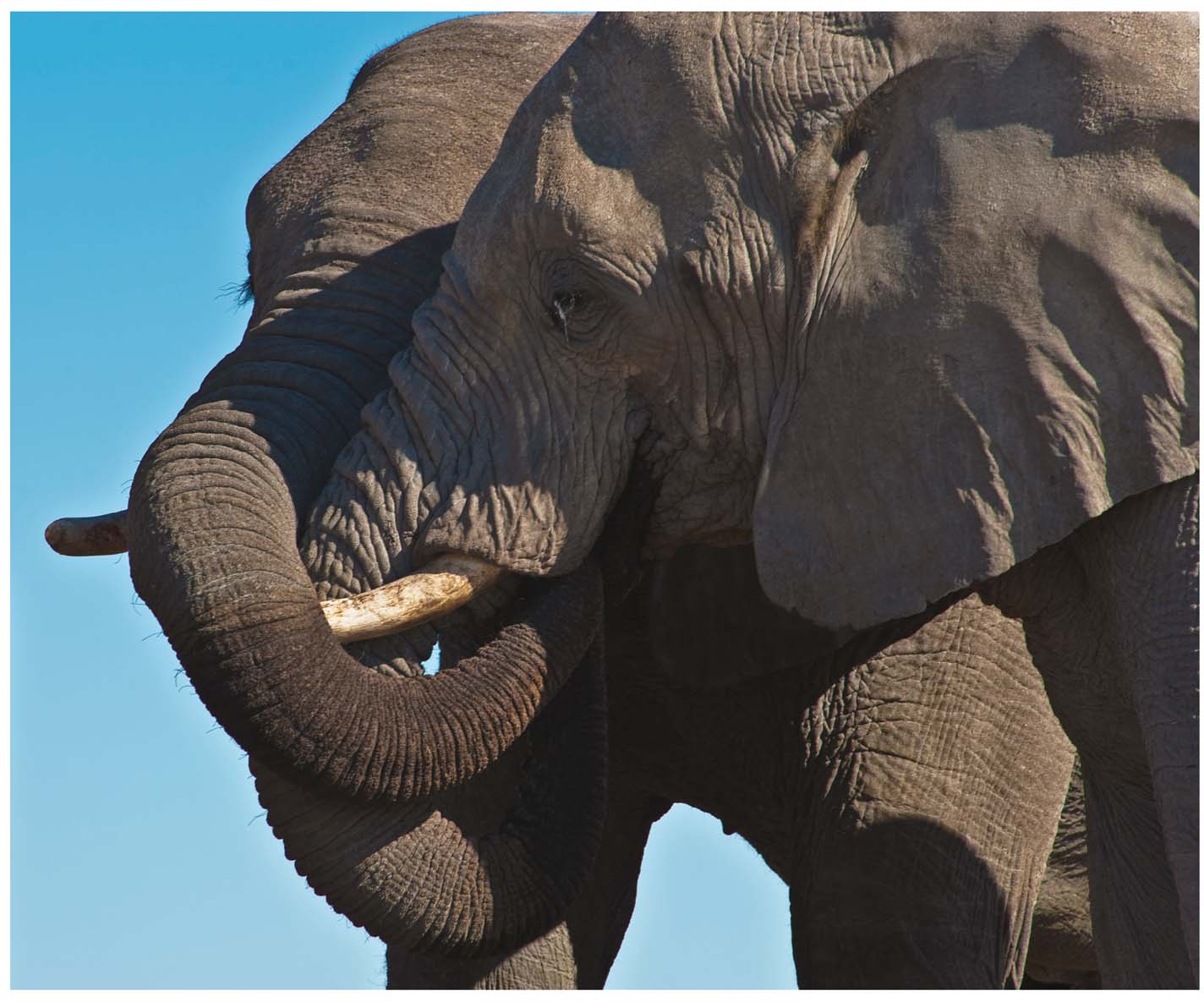
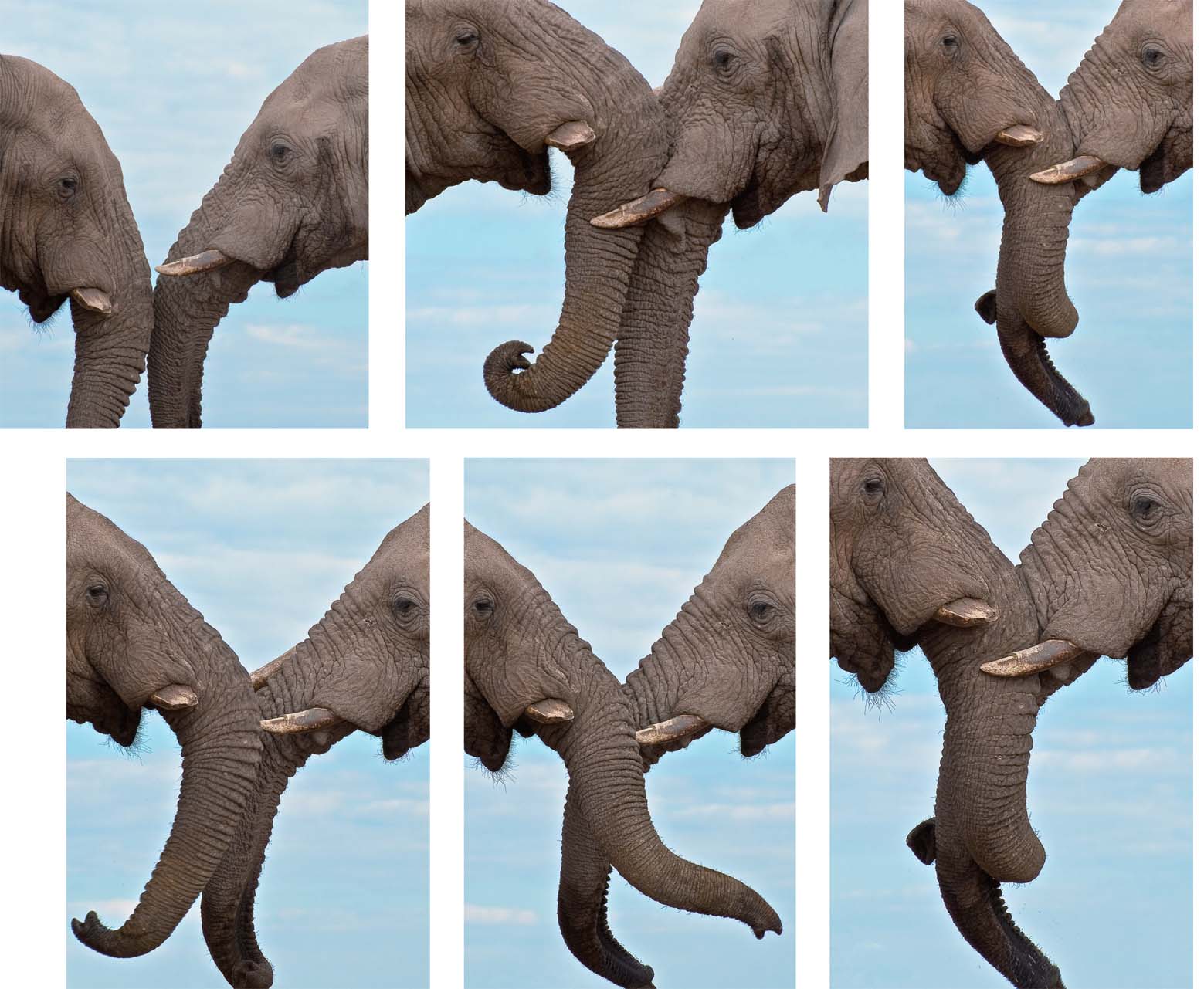
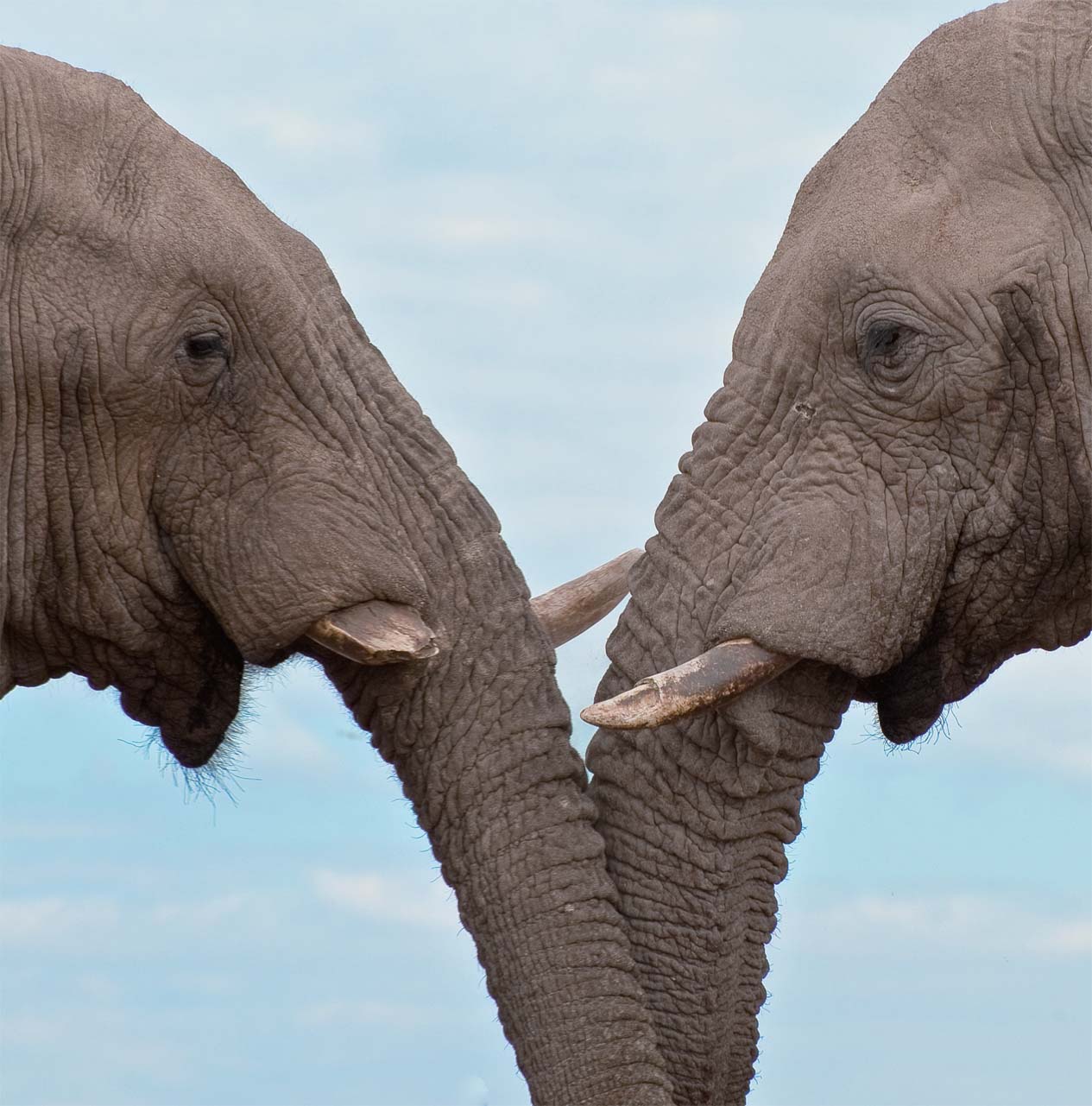
Willie (left) and Tim (right) engage in a gentle spar. Willie is more senior and higher ranking than Tim but these two elephants share a special bond and neither has ever shown aggression toward the other. They will often engage in a long and slow sparring session like this one that seems more like an extended greeting than a test of dominance.
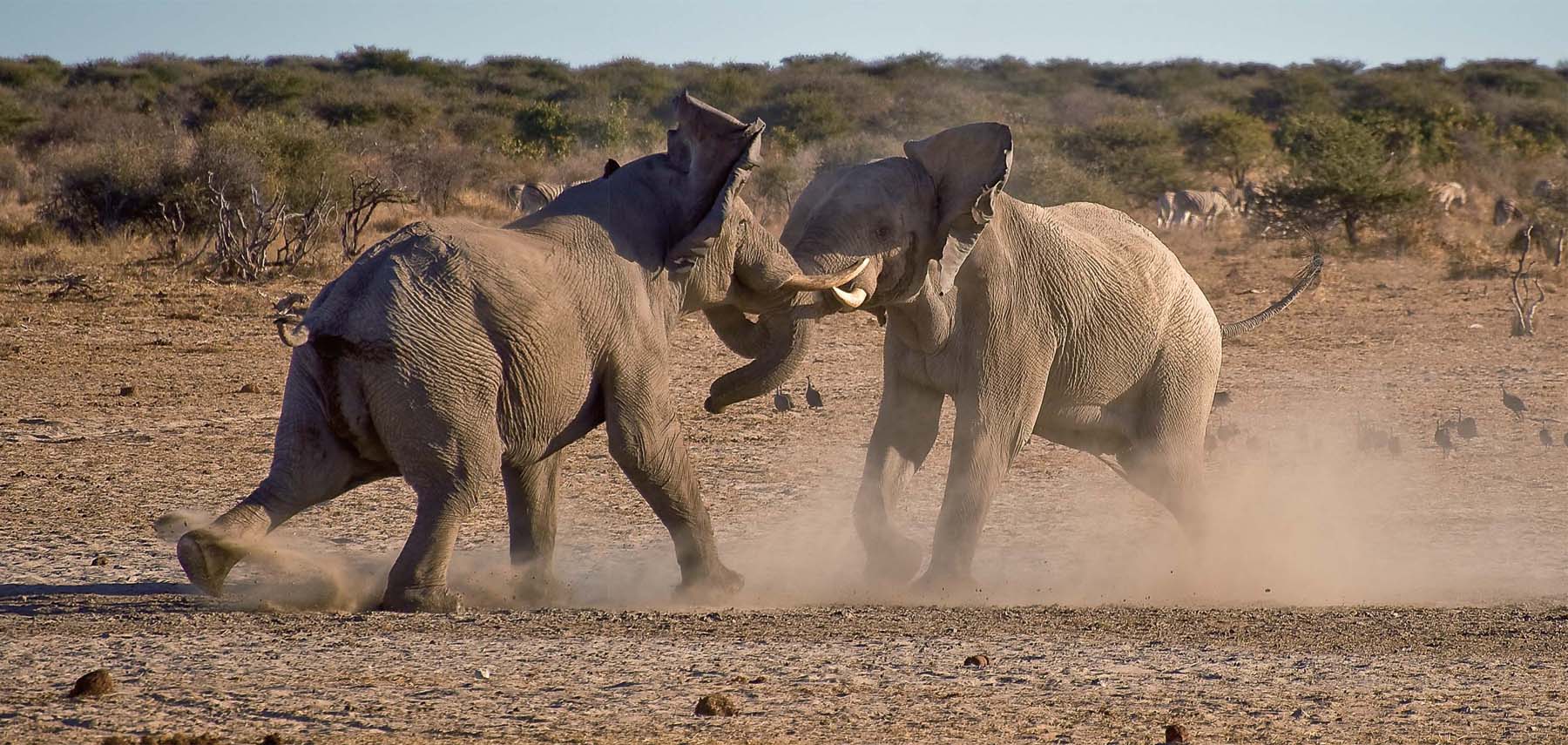
A balance of aggression and friendly behavior helps to maintain bonds among bull elephants. But in this case, there is no place for a friendly hello. The mid-ranking bull named Frankie Fredericks (on the left), who seemed to act as a henchman for Greg (after the disappearance of Torn Trunk), attacks a newcomer whose presence is clearly agitating Greg from a distance. Dust flies as the two goliaths hurtle at each other, massive heads raised, ears folded—first a squeak of leather, then a crack of colliding ivory. The assailant is initially undeterred and keeps coming at Frankie, but Frankie doesn’t miss a beat. He doles out the blows with greater purpose than I had previously witnessed in a bull standing his ground. He pushes his opponent all the way to the edge of the clearing, holding this new bull in a withering stare until the loser relents, heads out, and disappears into the tree line.
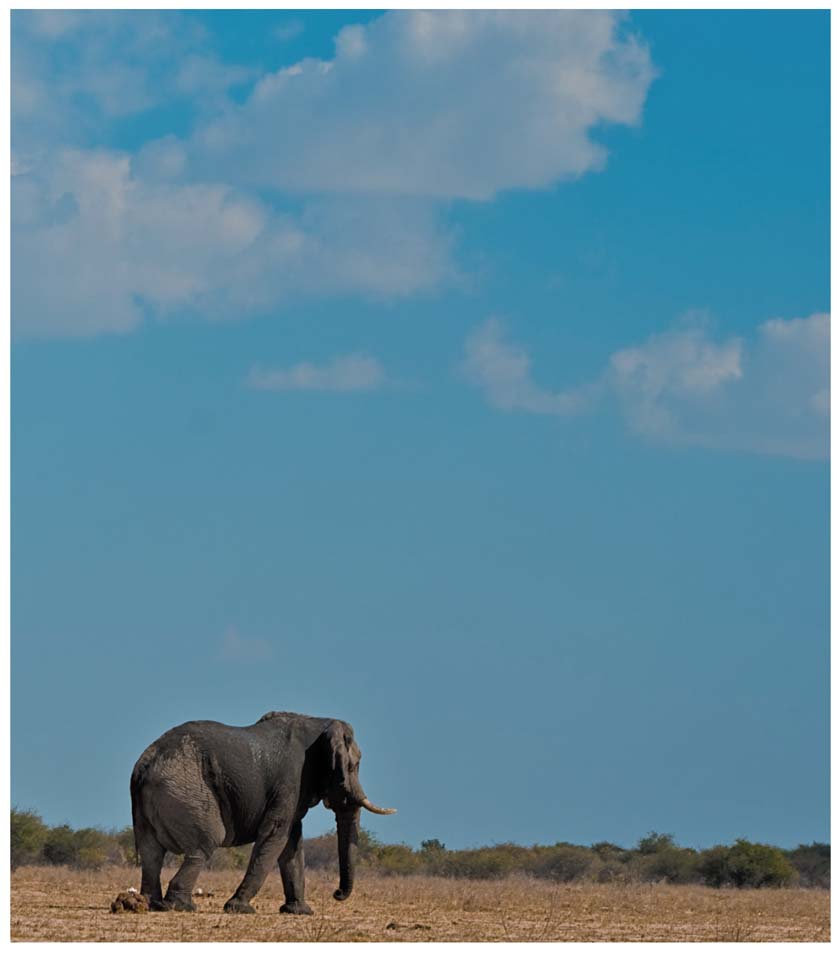
Relationships can be tricky and need constant maintenance, but it pays to have someone watching your back. There are some males, however, who just seem to prefer to be on their own.
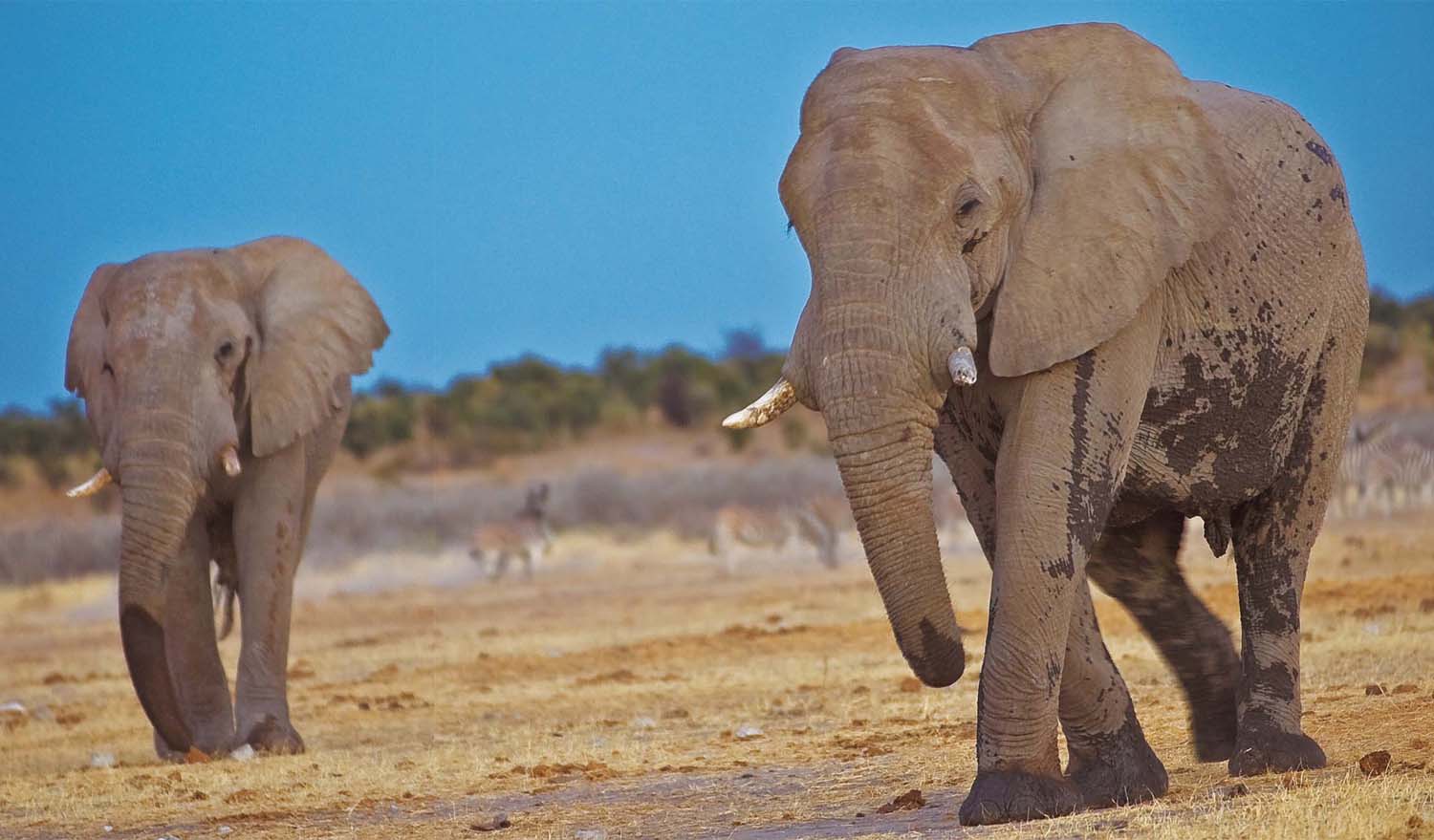
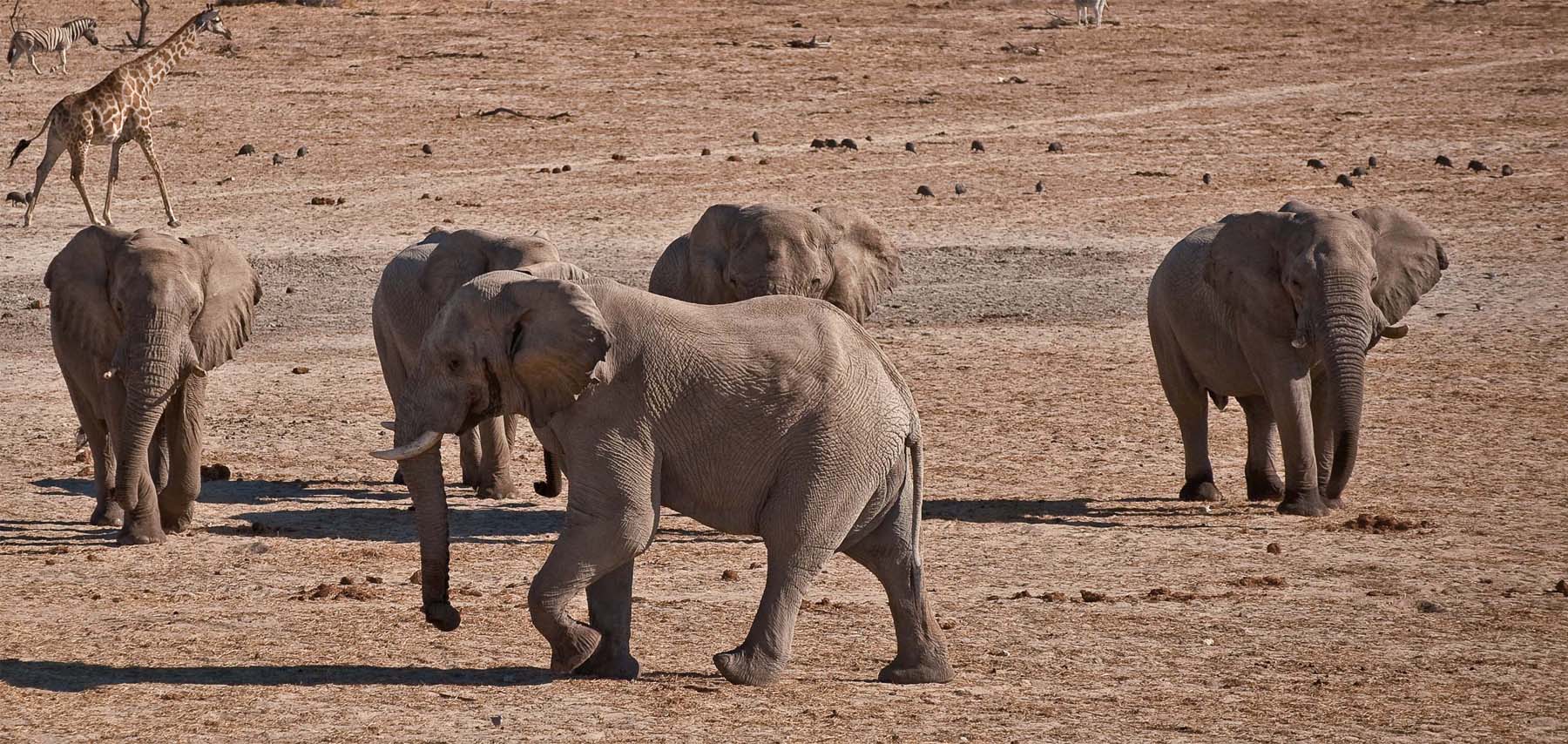
Evidence of coalition behavior is sometimes hard to find. Often behaviors are so subtle, it’s not clear that a group is ganging up on an individual for whatever reason. But there are times like the moment this photo was taken where there is no mistaking a coordinated effort to intimidate this arriving bull.
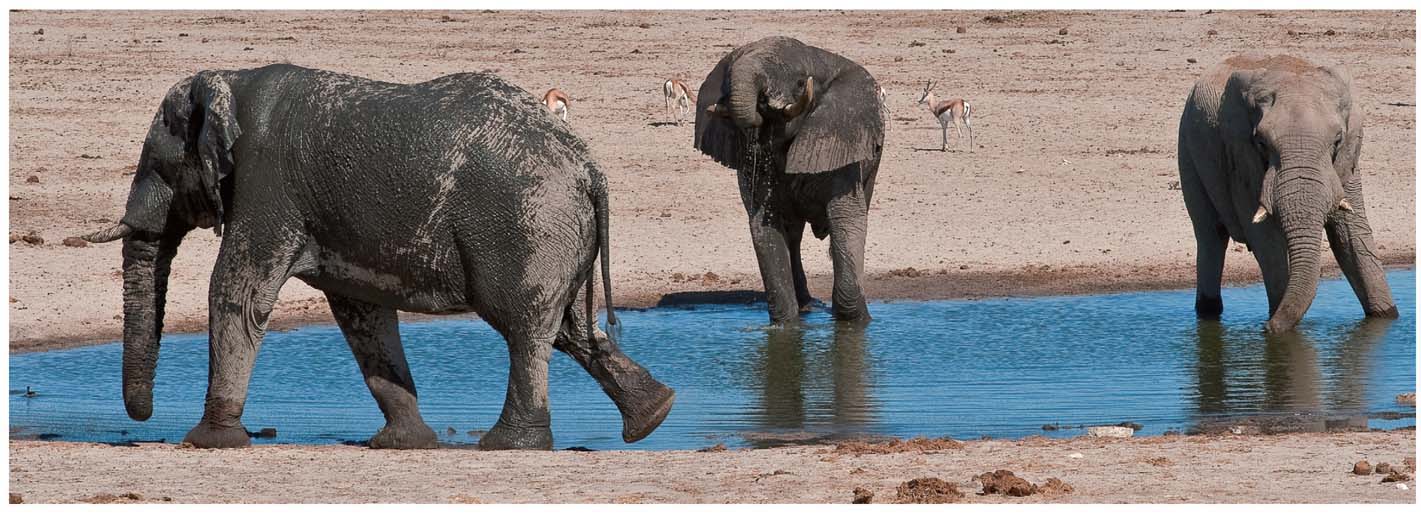

Marlon Brando defends Willie against Scar (from right to left).
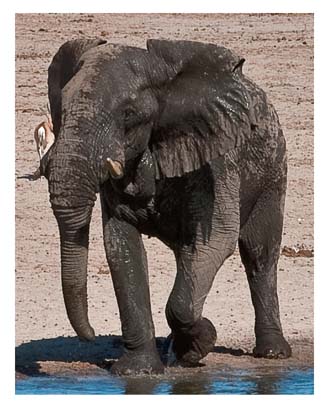
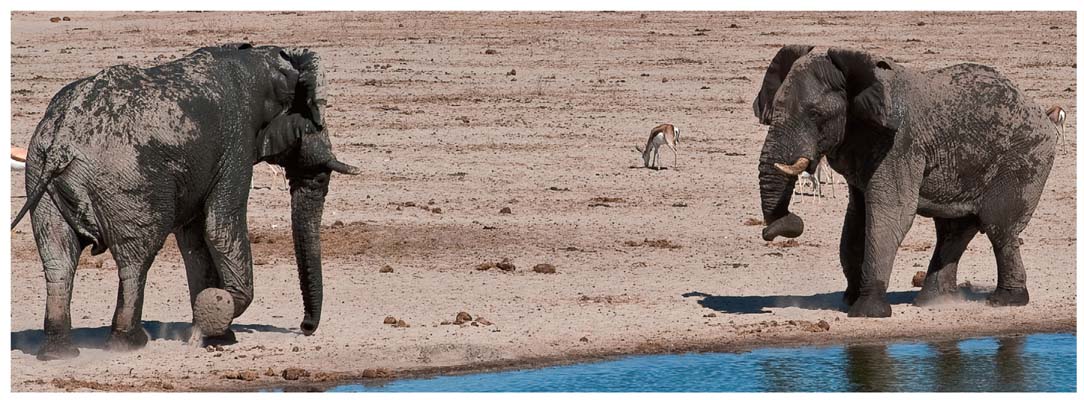
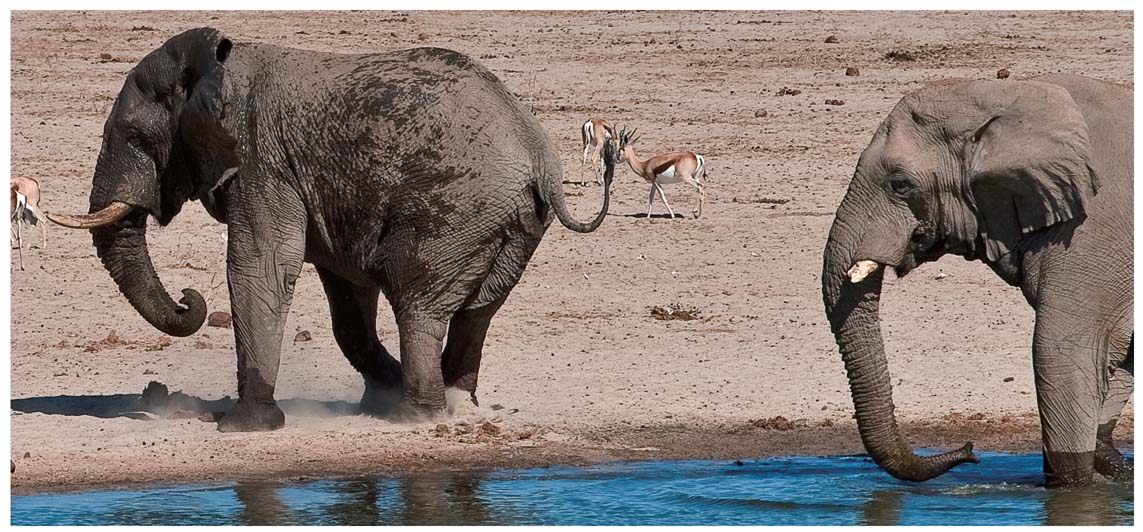
Scar approaches from the left, while Willie and Marlon drink with one eye on the intruder. Scar confronts Willie (top right), and Willie anxiously curls the bottom of his trunk. Just as he is being displaced, Marlon steps in.

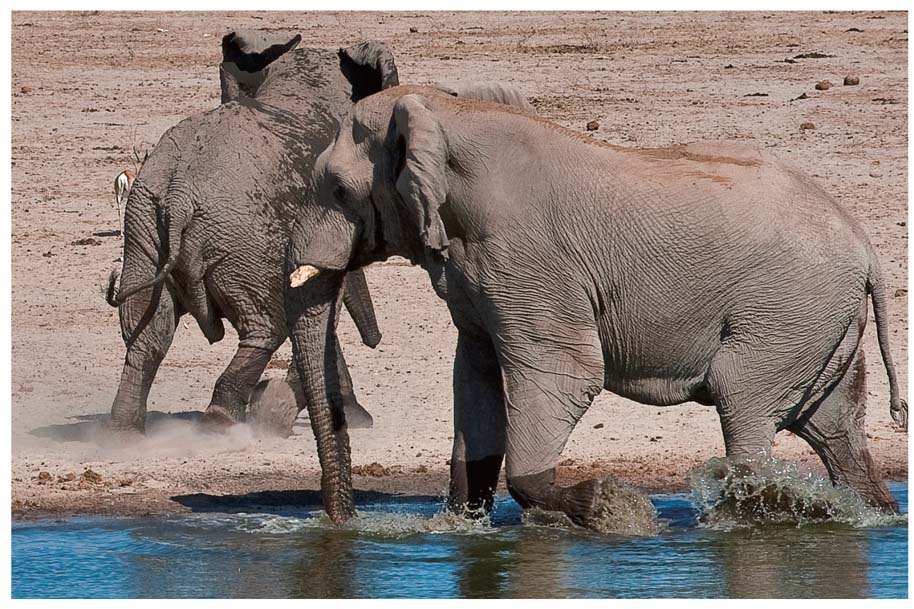
Marlon Brando quickly becomes quite the formidable defensive backup for Willie with his head held high (notice the slope of the back) and ears held out as he marches toward Scar to put him in his place. Just the threat of his posture is enough to cause Scar to back down and walk off, eyeing Marlon over his shoulder in case he were to change his mind and charge.

